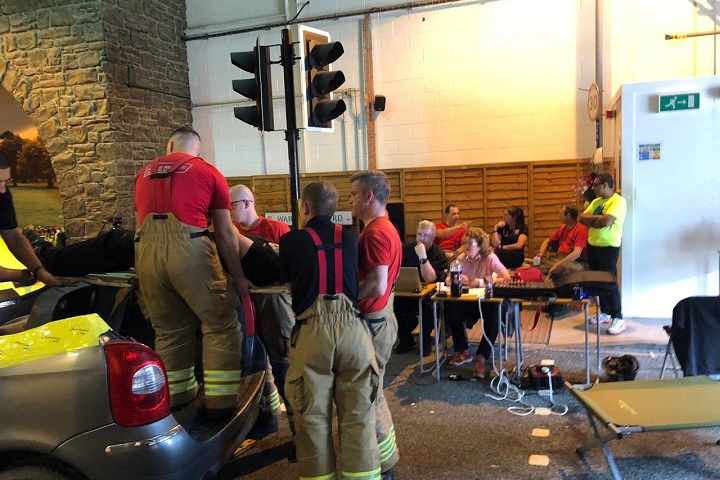
Image: the Road Safety Trust
New research into vehicle extrication suggests a different approach to how emergency services respond to collisions involving motor vehicles could reduce both deaths and disabilities.
Last year, more than 7,000 patients needed to be extricated from vehicles.
During this process, a patient may remain in the vehicle for an average of 30 minutes as slow, careful movements are used to avoid potential spinal injuries.
However, new research shows this may be increasing the rate of death and injury.
The research was carried out by professor Tim Nutbeam, consultant in emergency medicine at University Hospitals Plymouth NHS Trust and lead consultant for the Devon Air Ambulance.
It questions the principles of the existing extrication method, instead calling for the goal of minimising entrapment time.
The current method was developed on the basis that spinal injuries take precedence over other injuries and the overall objective was therefore to limit spinal movement during extrication.
However, the number of spinal injuries is much smaller than previously thought, with only 0.7% of patients trapped in motor vehicle collisions having such injuries.
Additionally, many of those with spinal injuries also have significant other life-threatening issues which need rapid assessment and management.
The researchers recommend that self-extrication should be delivered wherever possible with the goal of minimising entrapment time.
Their work shows spinal movements associated with extrication are much larger during assisted extrication than when a patient self-extricates.
It also highlights that rapid extrication techniques produce very similar movements to much slower techniques aimed at movement minimisation.
Professor Nutbeam carried out the research along with colleagues within emergency care and the National Fire Chiefs Council, with funding from the Road Safety Trust.
He said: “The historic paradigm of ‘movement minimisation’ in the development and application of extrication techniques is not grounded in evidence. Such an approach may contribute to the excess death associated with entrapment.
“Through the development of a bespoke patient-centred extrication plan with the primary focus of minimising entrapment time, we hope that we can improve patient outcomes, make better use of resources from all emergency services and reduce the impact of accidents on other road users.”
Sally Lines, CEO of the Road Safety Trust, said: “We are thrilled that, through our funding, Tim Nutbeam and colleagues have been able to identify how historical extrication techniques used in motor vehicle collisions can be improved.
“This research will reduce both deaths and disabilities and help us achieve our vision of zero deaths and serious injuries on UK roads. We look forward to the practical application of this research being used by emergency services.”
Great to see new idea’s and concepts are being discussed and researched. We have an online training platform for training firefighters and first responders on vehicle extrication ( http://www.rescue-sim.com ) We would be keen to get involved in the advancement of training techniques and seeing how we can support this? If this of interest please contact us…. Keep up the great work!
Nick Cox, Bournemouth
0